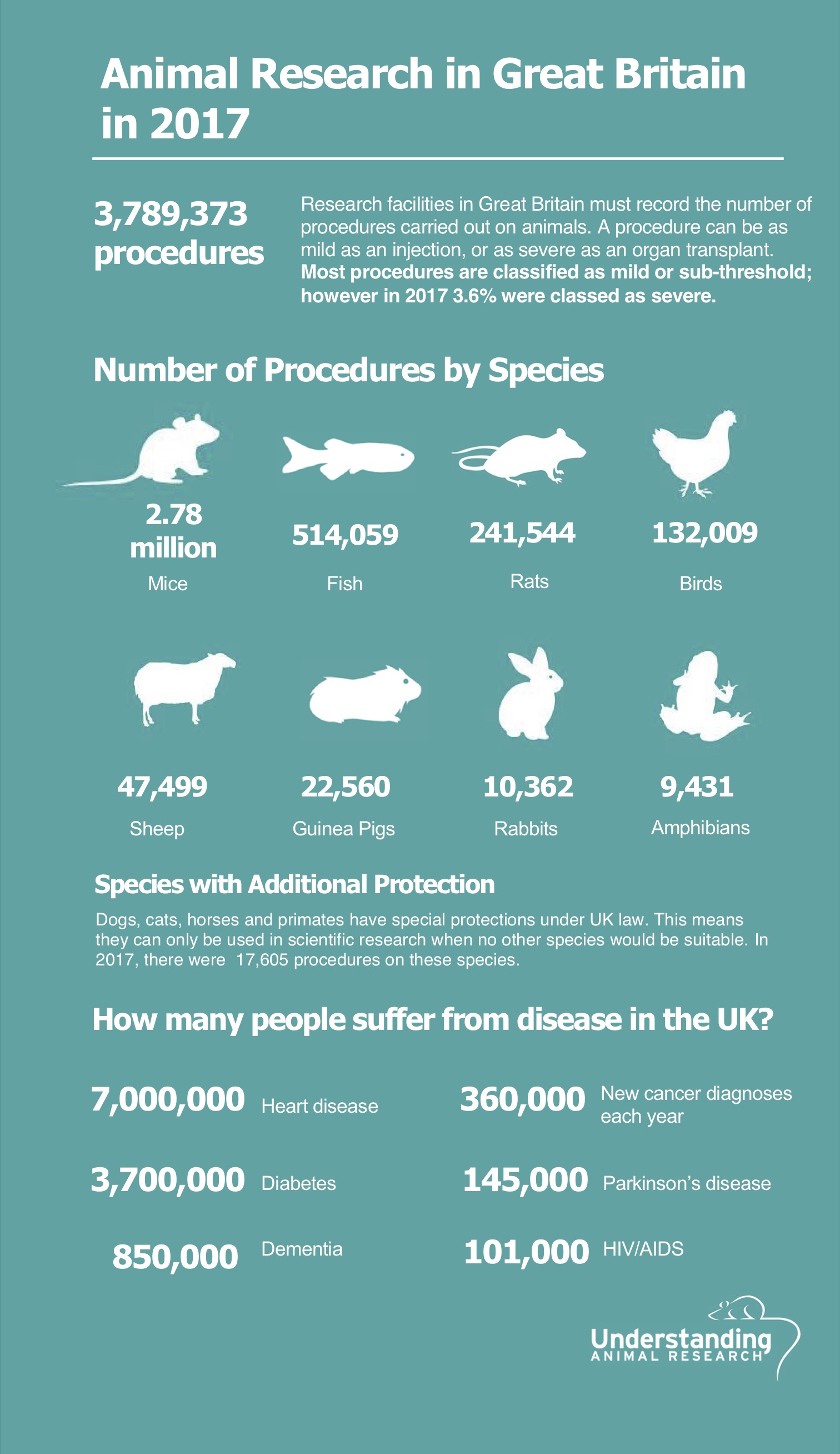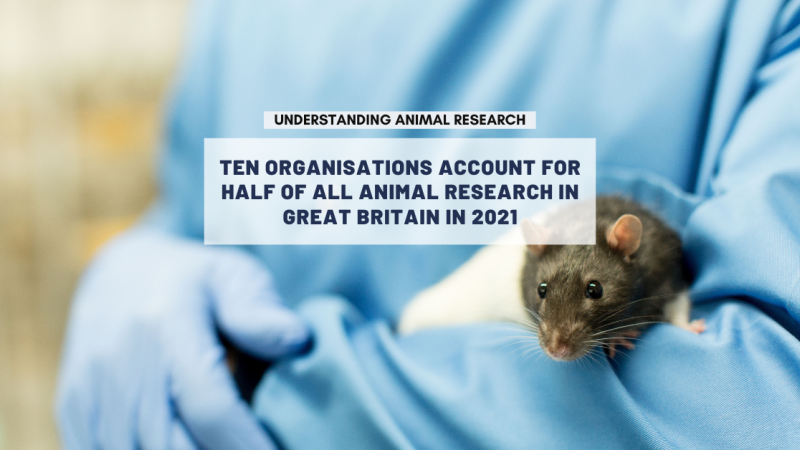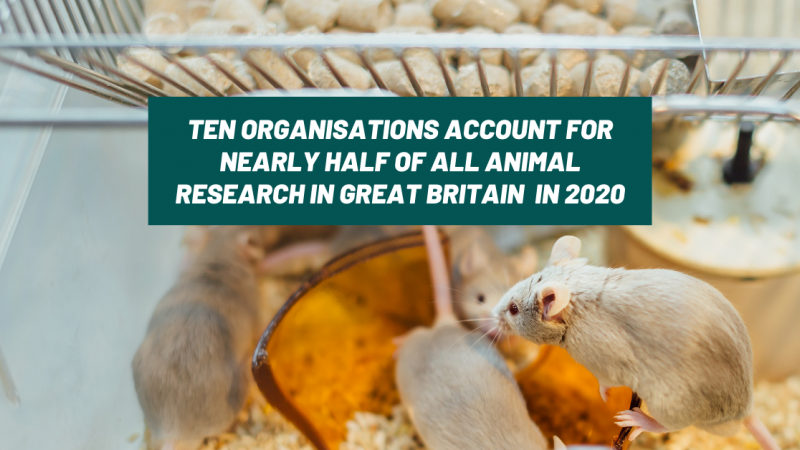-
Number of procedures on animals decreased by 4% to 3.8 million
-
Mice, fish, rats, and birds account for over 96% of all procedures
-
Dog and primate use falls to a 40-year low
The government today released its annual statistics on the number of animals used in scientific, medical and veterinary research in 2017. The figures show that 3,789,373 procedures were conducted in Great Britain in 2017, 3.7% fewer than in 2016.
Over 96% of procedures on animals involved mice, fish, rats and birds whereas cats, dogs and primates accounted for less than 0.2% of studies. There was a significant fall in the number of procedures on dogs (3,847 procedures) and primates (2,960 procedures), the lowest number for over 40 years for both species.
Half of all procedures were the creation or breeding of genetically altered (GA) animals that were not used in further experiments. These procedures fell by 1%, while the number of experimental procedures fell by 7%. Experimental procedures include basic and applied research, and regulatory studies aimed at ensuring product safety. No animals were used for testing cosmetics or their ingredients as this has been illegal in the UK since 1998.
A third of these procedures were carried out by ten universities.
Professor Robin Lovell-Badge, CBE FMedSci FRS, Senior Group Leader at The Francis Crick Institute, said:
“GA animals are extremely valuable for exploring basic mechanisms of biology, increased understanding of which can lead to better treatments or cures for diseases and for better welfare and quality of life for humans and animals. Once generated, stocks of GA animals need to be maintained by breeding. Despite breeding being of no harm for the animals, indeed it is a normal activity that they likely enjoy, this has to be counted as a procedure under the Act. This greatly inflates the number of GA animals that appear in the annual stats, with often very few of them being used for any additional, perhaps invasive procedure.”
Animals are used alongside other techniques such as using cell cultures, human studies and computational models. These methods are used – often in tandem – to answer the key biological questions necessary to understand and treat disease.
Wendy Jarrett, CEO of Understanding Animal Research, noted:
“Animal research continues to play a vital part in the development of modern treatments and medicines. While the numbers of procedures may vary from year to year, we should be proud of the important contribution that the UK makes to scientific and medical advancement worldwide.”
Animal research is strictly regulated in the UK. Every procedure, from a simple blood test to major surgery, requires individual, establishment and project licences, as well as approval from an Animal Welfare and Ethical Review Body. Before an animal is used, researchers must show that the knowledge could not be acquired using non-animal methods.
The proportion of procedures categorised as Severe fell from 3.9% in 2016 to 3.6% in 2017. On the other hand, those categorised as Sub threshold (42.5%) and Mild (35.7%) together accounted for 78% of all procedures.
|
Category |
2016 |
2017 |
Rise or fall? |
|
Sub-threshold |
38.4% |
42.5% |
↑ |
|
Mild |
37.7% |
35.7% |
↓ |
|
Moderate |
16.0% |
14.5% |
↓ |
|
Severe |
3.9% |
3.6% |
↓ |
|
Non-recovery |
4.0% |
3.6% |
↓ |
While the government produces these statistics on an annual basis, more universities than ever before are openly publishing their own figures on their websites. This move towards greater transparency has been bolstered by the Concordat on Openness on Animal Research in the UK, which has been signed by 120 organisations since it launched in 2014.
See more information from UAR here.

Last edited: 16 August 2022 10:00




